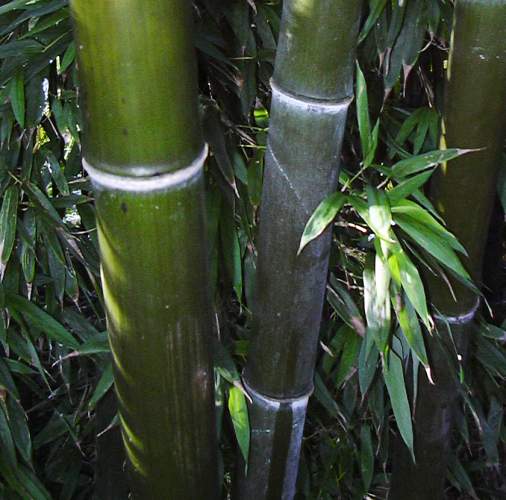- Phyllostachys
Taxobox
name = "Phyllostachys"

image_width = 240px
image_caption = "Phyllostachys nigra "
regnum =Plant ae
divisio = Magnoliophyta
classis =Liliopsida
ordo =Poales
familia =Poaceae
subfamilia =Bambusoideae
supertribus =Bambusodae
tribus =Bambuseae
subtribus =Shibataeinae
genus = "Phyllostachys"
genus_authority = Siebold &Zuccarini
subdivision_ranks =Species
subdivision =
*"Phyllostachys angusta "
*"Phyllostachys atrovaginata "
*"Phyllostachys aurea "
*"Phyllostachys aureosulcata "
*"Phyllostachys bissetii "
*"Phyllostachys edulis "
*"Phyllostachys glauca "
*"Phyllostachys heteroclada "
*"Phyllostachys makinoi "
*"Phyllostachys nigra "
*"Phyllostachys pubescens "
*"Phyllostachys rubromarginata "
*"Phyllostachys vivax "
*etc."Phyllostachys" is a
genus ofbamboo . The species are native toAsia with a large number of species found in CentralChina , but can now be found in manytemperate and semi-tropical areas around the world as cultivated plants or escapes from cultivation. Most of the species spread aggressively by underground rhizomes and some are consideredinvasive species in areas outside their native range, particularly inNorth America .The stem or
culm has a prominent groove, called a sulcus, that runs along the length of each segment (or "internode"). Because of this it is one of the most easily identifiable genera of bamboo.There are approximately 75 species and 200 varieties and
cultivar s of "Phyllostachys". The largest grow to be about 100 feet (30 m) tall in optimum conditions. Some of the larger species, sometimes known as "timber bamboo", are used as construction timber and for makingfurniture .Some of the smaller species can be grown as
bonsai .
Wikimedia Foundation. 2010.
